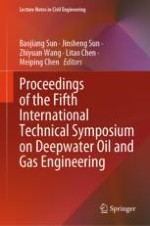2024 | OriginalPaper | Chapter
Numerical Simulation Study on Gravel Packing Parameters of Horizontal Wells in Natural Gas Hydrate Reservoirs
Authors : Junyu Deng, Rui Zhang, Liyong Guan, Hongzhi Xu, Jindong Han, Zizhen Zhang, Tiankui Guo, Weigang Du
Published in: Proceedings of the Fifth International Technical Symposium on Deepwater Oil and Gas Engineering
Publisher: Springer Nature Singapore
Activate our intelligent search to find suitable subject content or patents.
Select sections of text to find matching patents with Artificial Intelligence. powered by
Select sections of text to find additional relevant content using AI-assisted search. powered by
